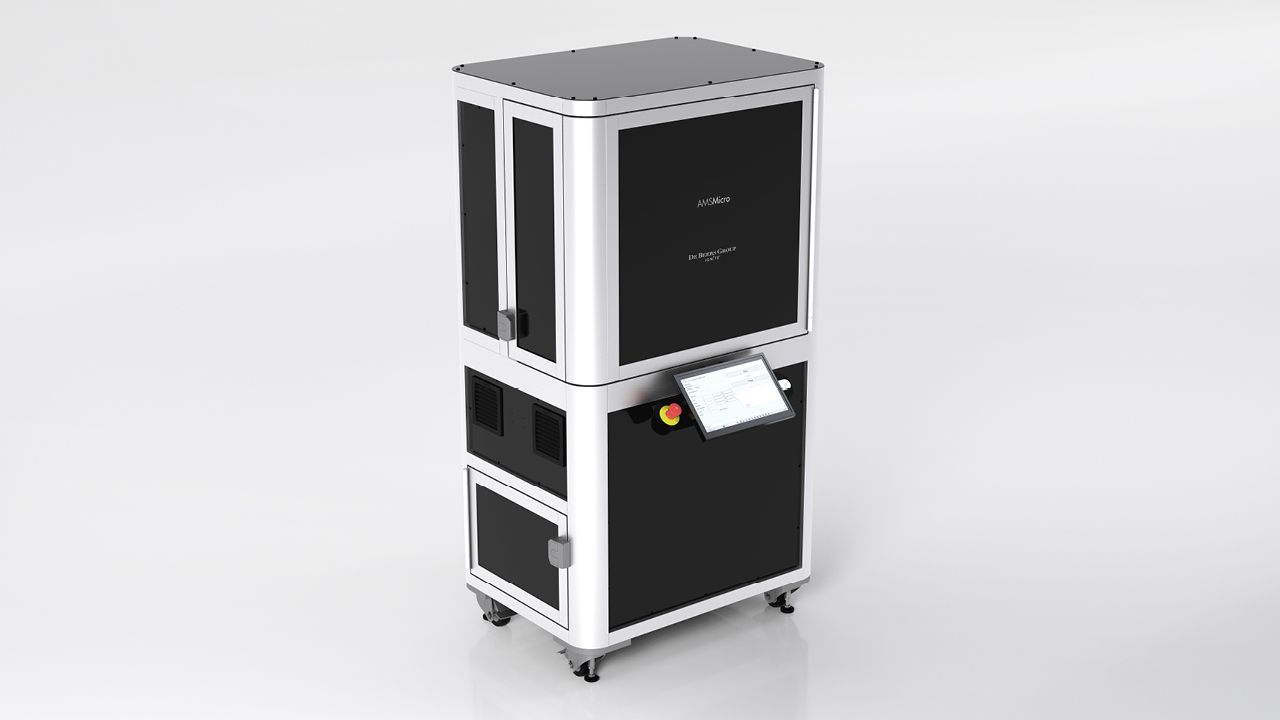With the market for lab-grown detection devices getting ever more crowded, manufacturers are making their products stand out by solving specific problems, filling niches, and experimenting with artificial intelligence (AI).
The AMSMicro by De Beers Group Ignite is designed to automate the screening of melee diamonds as small as 0.001 carats, with results available in real time through a touch-screen interface. The device can screen an average of 2,200 diamonds per hour in sizes ranging from 0.6 to 0.9 millimeters in diameter, significantly reducing the time and costs associated with verifying small parcels.
To achieve accurate results, the AMSMicro uses “a combination of techniques, including fluorescence, phosphorescence imaging, and photoluminescence spectroscopy, alongside a proprietary algorithm,”
says Trevor Poulter, De Beers Group Ignite’s product group manager.
Set in blockchain
Of course, the AMSMicro isn’t the only game in town. In May, Antwerp-based technology firm Delimex launched its Hera synthetic-diamond detection device, billing it as the first with blockchain capabilities.
Because the machine can identify mounted diamonds as well as loose ones, the Hera system lets users check the diamonds during the stone-setting phase itself, so it fits easily into the mass-production process for jewelry and watches, the company explained at the time. And with blockchain, Hera can automatically push each stone’s screening result into the cloud.
“Loose diamond parcels can still be passed from one hand to another before entering the [jewelry-]manufacturing phase,” says chief scientific officer Ans Anthonis. “The screening and detecting machines on the market are for diamond wholesalers, but Hera is an automated machine for a jewelry-manufacturing company willing to offer traceability and full transparency to [its] clients or end consumers.”
AI in action
Other players in the market are utilizing AI and machine-learning algorithms to enhance their devices’ accuracy. DiaTechPro (DTP), based in Verona, Italy, launched its DiaSynth device in July to test both loose and mounted stones with diameters of 0.5 millimeters and up. It uses a technique known as ultraviolet-induced visible fluorescence (UVIVF) photography to do so, and it has a proprietary AI to “facilitate the classification process” of natural diamonds, lab-grown diamonds, and simulants, according to DTP chief executive Marco Pasqualini.
No operator could ever process the same amount of information and get to the same conclusions in a few seconds.
Once “the AI detects the gemstone on the testing platform or mounted in the jewelry, [it] drives the camera to capture the fluorescence and phosphorescence…and extracts 130 features per tested gem to run the classification,” he explains. Results then appear clearly on screen; users don’t need to analyze the photos. “No operator could ever process the same amount of information and get to the same conclusions in a few seconds. AI is key for precise, repeatable and fast data analysis.”
Similarly, DRC India uses AI in its Guardian device, which launched in May. It has a large scanning area with an adjustable height to test chunky jewelry and loose stones up to 100 carats. “Our AI system leverages data from an industrial digital camera paired with an advanced UV source, capturing diamond behavior under specific UV light conditions,” says CEO Hardik Patel.
Thanks to DRC India’s base in the diamond hub of Surat, it benefits from data sharing with laboratories and manufacturers. This fuels its machine-learning capabilities. “If we find something new, we record those diamond properties and add them to our AI library, which already includes thousands of records to detect lab-grown diamonds automatically,” says Patel.
Whether focusing on melee or using the latest computing technology, device makers continue to tackle undisclosed synthetics in inventive ways.
Main image: De Beers AMSMicro rendering. (De Beers)
This article is from the November-December 2023 issue of Rapaport Magazine. View other articles here.
Stay up to date by signing up for our diamond and jewelry industry news and analysis.



